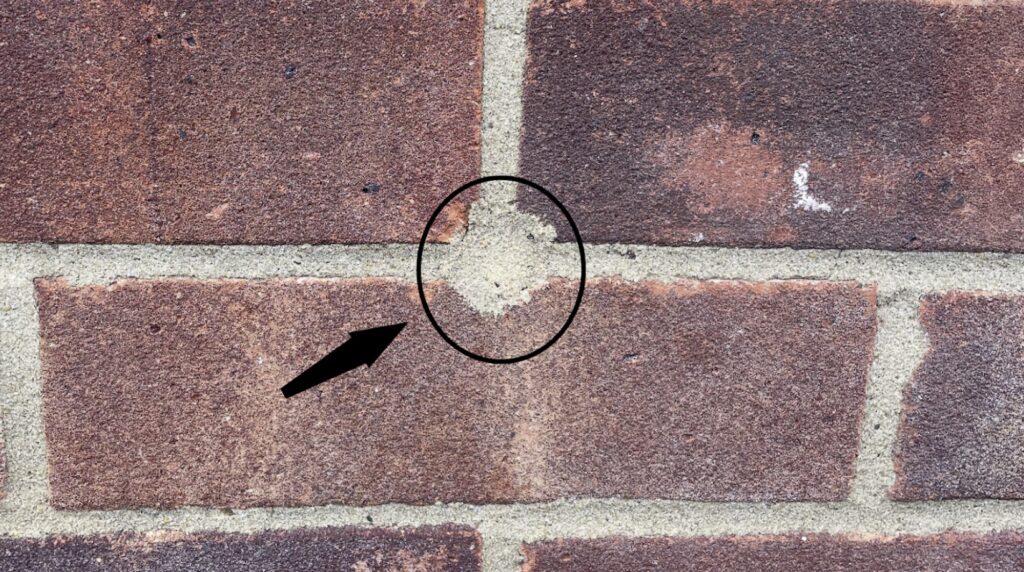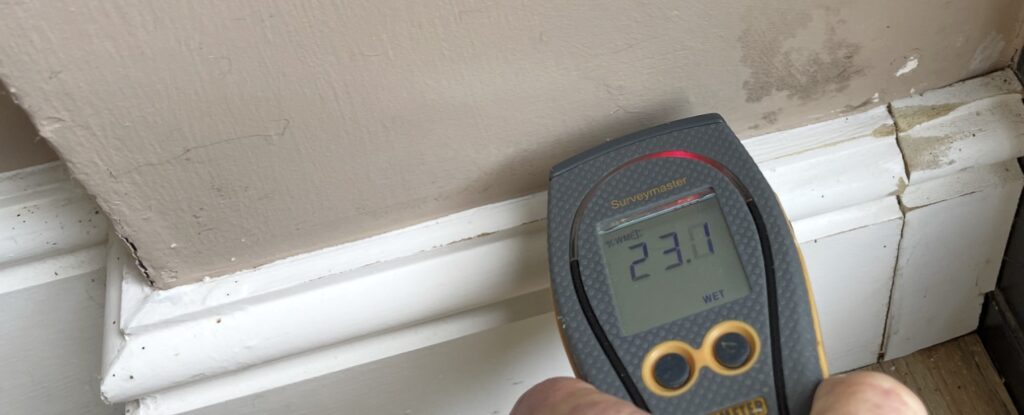Many houses built before 1995 were constructed with cavity walls but without any insulation between the inner and outer leaves. In an effort to reduce heat loss and improve energy efficiency, retrofitting cavity wall insulation became a widely promoted solution, especially from the late 1990s onward.
Homeowners rightly focused on improving insulation in the roof, walls, windows and doors, and cavity wall insulation appeared to be a simple, cost effective fix. However, with the benefit of hindsight, we now know that not all retrofit installations were successful, and some have introduced serious issues.
Retrofitted cavity wall insulation is often identifiable by a series of small, circular mortar patches in the brickwork. These marks indicate where insulation was blown into the cavity through drilled holes, which were later filled with mortar. See image below.

Common Problems with Retrofit Cavity Wall Insulation
Over time, we have seen a pattern of defects emerging in some homes with retro fitted insulation, particularly in properties built between 1900 and the 1980s. One of the most significant problems is dampness and mould caused by failed or poorly installed insulation.
1. Water Ingress and Damp Transfer
In older properties, the external wall is often more porous, especially with brick, un-rendered masonry or poorly pointed mortar. When cavity wall insulation is installed in these walls, any wind driven rain that penetrates the outer wall can be absorbed by the insulation material.
Some insulation types, especially urea formaldehyde foam or certain loose fill mineral wools, are prone to holding moisture. Once wet, the insulation acts as a moisture bridge, transferring damp from the outer leaf across the cavity and into the inner wall.
Common signs include:
- Damp patches at low levels, just above the skirting boards
- Discolouration, peeling paint or wallpaper
- Mould growth on internal walls
- A musty smell in affected rooms
The image below shows minor mould, cracking plaster to around the rusting angle bead and an elevated moisture reading from a damp meter, typical of this issue.

2. Insulation Slumping
Another frequent problem is insulation slumping, where the insulation settles or collapses to the bottom of the cavity over time. This can happen due to:
- Poor installation, such as incorrect fill density
- Moisture damage
- Gravity acting on loose fill material in a wide cavity
Slumping creates voids in the upper sections of the wall. The result is a patchy wall structure: some areas are insulated, others are not. This uneven insulation causes thermal bridging or cold bridging.
3. Cold Bridging and Condensation
Cold bridging occurs when internal warm air comes into contact with a colder part of the wall surface, often where insulation is missing or wet. This causes condensation to form, which can lead to persistent mould growth, particularly in corners or behind furniture where airflow is limited.
Cold spots can also form if the installer missed areas of the wall, such as around window reveals, lintels or awkward sections. This is another sign of a poorly executed retrofit.
What We See at Haus Surveyors
At Haus Surveyors, we frequently identify these issues during inspections of cavity wall properties with retrofit cavity wall insulation, especially those built between 1900 and the late 1980s. These buildings were not originally designed with insulation in mind and the wall construction often lacks protection against moisture ingress.
Final Thoughts
Where damp or mould is found in a home with retrofitted insulation, we sometimes recommend a cavity inspection, by a specialist removal company or a definitive cause of action. If the insulation is found to be wet, slumped or defective, complete removal is usually the best course of action.
While cavity wall insulation can be effective in suitable properties, it is not a one size fits all solution. Older homes, particularly those in exposed locations or with porous brickwork, may be better left uninsulated or require alternative insulation strategies.
If you suspect your home is suffering from insulation related damp, we can help you assess the issue and advise on appropriate next steps. Our independent, RICS compliant reports are designed to give clear, unbiased insight so you can make informed decisions with confidence.



